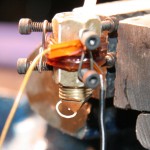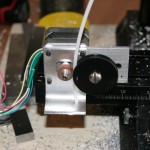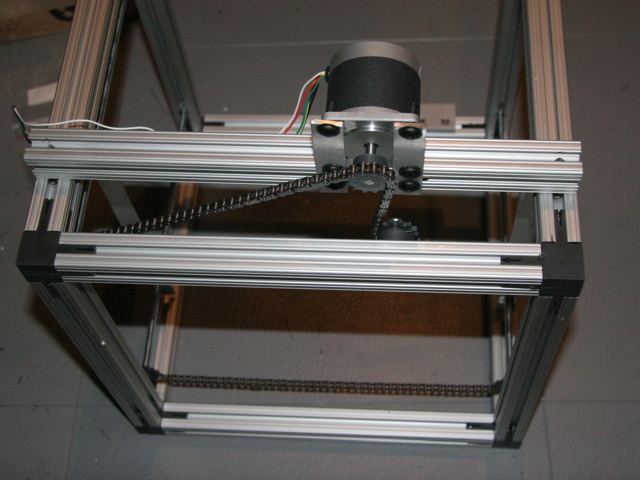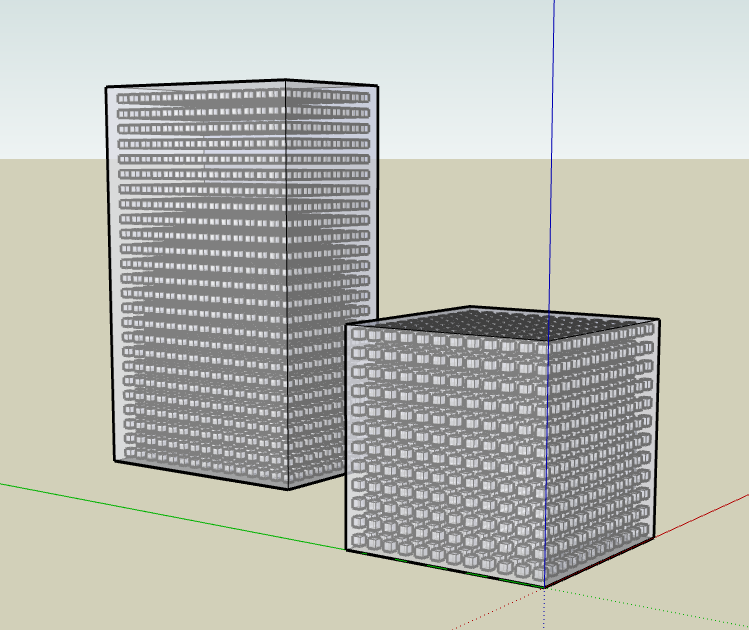I am building a 3D printer, a sister project to the self replicating printer project RepRap. A 3D printer is capable of building usable objects, such as toys, by ‘drawing’ one layer at a time, until the whole object has been constructed.
While researching plastics for this printer I came across a dilemma – Which is better Bioplastic or Petroleum based plastic? Bioplastics are derived from corn or potato starches. ‘Petroplastics’ on the other hand is derived from crude oil.
One of the goals of mine is to develop an 3D printer ecosystem which enables the direct recycling of plastic – thus keeping plastic out of the land fills. Until this ecosystem is complete, I will need virgin material to work with. So the question remains – Which is “better”?
Defining Better
Before we attempt to define which plastic is better, it would be helpful to have some metrics for comparison. Like many things there are a continuum of variables, and for each variable there is a continuum of values. For the purposes of my interests, I’m going to attempt to answer:
- What is the environmental impact of the production or extraction of the base material for the resin?
- How readily available are the resources needed to produce the resin?
- How does the use of those resources for the production of resin affect the use of those resources for other means?
- How long does the resin take to be reduced to base organic materials?
Extraction/Production
Petroplastic
Petroplastic is derived from crude oil. During the refining process, hydrocarbons are extracted from the oil to produce various everyday chemicals – octane is extracted and refined to produce auto fuel, nonane and hexadecane to produce diesel, kerosene, which are used in making jet fuel. In fact, Wikipedia lists dozens of chemicals which are used in most of the products that industrial societies have become dependent on – petroplastic is just one product derived from it.
Millions of years ago, places which currently have abundent reserves of oil or natural gas were lush rain forests with rich healthy ecosystems. The surface of the earth has changed via plate tectonics – which is why oil has been found in places like the Arctic or underwater.
As plants and animals die, they decompose by natural processes – by other animals, insects and eventually microbes. The raw material is used in a successive generation to form the building blocks of plants which animals eat and so on. If this process is interrupted, either by a change in climate or other catastrophic event, the organic material will eventually end up in underground reservoirs. Heat and pressure causes these compounds to combine into different types hydrocarbon chains. The variance in temperature, porosity, and pressure in these reservoirs determines how it achieved the state we see today – Oil Shale exists where rock is very porous; areas of high heat and pressure have abundent natural gas; and somewhere in between is where “sweet crude” exists.
The energy density of oil is about 40 to 1 – a simple example is it takes 1 gallon of gas to extract 40 gallons of gas. This fact is why oil is so attractive as an energy source.
Thermoplastic is not one thing – there are many different types of thermoplastics for lots of different uses: High Density polyethylene (HDPE), Low density polyethylene (LDPE), Acrylonitrile butadiene styrene (ABS), Polyethylene terephthalate (PETE), Polytetrafluoroethylene (PTFE), Polyvinyl chloride (PVC) – just to name a few.
Plastics also have additives which adjust their properties – some making them shatterproof with Bisphenol-A, some stabilizing the resin with lead or cadmium.
Bioplastic
Bioplastic is derived from plant starches, usually corn or potato. The endosperm of corn, the center white in the kernel, contains the starch which is extracted by soaking, grinding and washing. This is then combined with plasticizers (sorbitol & glycerine in varying amounts) to produce a thermoplastic.
When harvested, the left over material (husks, ears, stalks) are composted and returned to the soil and supplemented with fertilizers.
It has been difficult to find information about the inputs to corn growing for the production of bioplastic; I’ve started looking into information about ethanol production. According to T.W. Patzek at Berkley, siting several studies averages the net energy production at +280 BTU. I’m intrigued by one study which also includes the energy consumption of farm equipment which concludes a net negative energy output of 33,000 BTUs! This means it takes much more energy to produce a unit of ethanol than the ethanol can provide to cars.
Environmental Impact for Production
Farm technology is currently fossil fuel based – from the fertilizers used to enrich soil, to the farm equipment used to prepare the soil and harvest the plants, to the machines that post process the plant material into plastic.
Availability
As mentioned before, oil was formed after millions of years in ideal conditions; trapped in underground fissures. But how much exists?
Hubbert’s peak refers to a study done by geophysicist M. King Hubbert in 1956 which predicted peak production of US oil in 1970; his prediction was accurate. In 1969, he predicted world wide peak oil production in 2000. In Kenneth Deffeyes’ book “Beyond Oil”, he suggests we are in a post peak condition now. Edmunds.com – yes the car buying site, as a fantastic summary with these words of warning:
1. Oil is not an infinite resource.
2. Remaining supplies of oil should be used wisely.
3. Alternative sources of energy need to be brought on line soon.
Civic Actions has a neat visualization of the remaining world oil.
Conversely, corn requires clean water, fertilizer and harvesting equipment all which require oil today. As oil becomes more scarce, corn production will become difficult if not impossible – unless alternative production techniques can be implemented.
Side Affects
Plastics resin is a byproduct of oil – its production has little impact on other uses of oil.
Does the production of bioplastic have an impact on corn or potato for consumption or feed stock? Using the ethanol analogy, it may have minimal impact. According to the renewable fuels association concerns about the impact on food are unfounded. In fact the correlation between food costs had more about scarcity of oil rather than its use in biofuels and bioplastic. It appears that much of the land devoted to oil alternatives were unused until recently.
Decompose
Petroplastic ‘photodegrades’ in sunlight. The ultraviolet light from the sun causes polymer chains to become brittle and crack under stress. Unfortunately, natural microbes responsible for natural decomposition do not recognize these polymer chains as food. Work is under way to engineer microbes which consume plastic (green goo?). A company in the UK called “d2w” has a product which enables plastic to degrade without sunlight. Without details, I presume that the plastic does not degrade to base organic compounds – it works by making polymer chains brittle without ultraviolet light.
Simply put – petroplastic will not decompose or compost – it simply breaks apart into smaller plastic pieces which are unusable to life as we know it.
UPDATE: June 2009 – This statement may not be true. Apparently a two students have bread a microorganism which can consume plastic (via mnn). I will follow this closely.
Bioplastic, being polymers of glucose (specifically amylose and amylopectin) are considered food by decomposing microorganisms – no special magic or unnatural remedies required.
Which is better?
Which is better – bioplastic or petroplastic? Given how much oil is used in the production of the crops used to make it would appear that petroplastics are ‘better’ than bioplastics.
As technologies are developed to replace oil in farming equipment and transportation, bioplastics will soon eclipse petroplastics as the environmentally sound choice.
I for one will support the development of Bioplastics.
From the Experts
A comment was posted to my polystarch post which seems to be from a pro-petroplastics company:
From D2W – Degradable Plastics
“Plastics made from crops, are at least 400% more expensive, they are not strong enough, and they emit methane (a powerful greenhouse gas) in landfill. Also, it is wrong to use land, water and fertilisers to grow crops for bioplastics and biofuels, which drives up the cost of food for the poorest people. See http://euobserver.com/9/25831/?rk=1
The same applies to growing cotton or jute to make durable bags. These rapidly become unhygienic and become a durable form of litter, but they can be made from oxo-bio plastic to last up to 5 years.
Paper bags use 300% more energy to produce, they are bulky and heavy and are not strong enough. They will also emit methane in landfill
However, ordinary plastic and recycled plastic can be made oxo-biodegradable.
This is done by including d2w additive made by Symphony UK, which makes it degrade, then biodegrade, on land or at sea, in the light or the dark, in heat or cold, in whatever timescale is required, leaving NO fragments NO methane and NO harmful residues. Oxo-bio meets American Standard 6954, and there is little or no additional cost.
Oxo-bio plastic is made from petroleum, but this is an advantage, not a disadvantage. Some people would like to stop using petroleum to fuel cars and planes, but until that day arrives it makes sense to use the by-product of oil which used to be wasted.”
PSM is definitely price competitive to petroleum based resin, and in some cases less costly.
The strength may be suitable for some applications and not suitable for others. Not all petroleum plastics are “strong enough†for all applications either.
In most landfills, NOTHING degrades, not newspapers, not banana peels, and not PSM. Therefore, if it does not degrade, it will not release anything. Conversely, if it does degrade, it will not release any more gasses than food waste such as a corn cob.
Unlike other biopolymers, PSM does not use corn intended for “people foodâ€. Our stock is made specifically for PSM and is not affected, nor will affect, the global corn prices.
The additives on the market that can be mixed in with petroleum plastics to make them “degradable†are beneficial in extremely limited applications. In short, they break-apart (degrade) the product, but the plastic particles are still present. For example, the physical “bag†may be gone, but your lawn is now infused with plastic particles which will take tens of thousands of years to degrade or be eaten by animals and harm them. In many ways, it is harder to clean up the particles than the bags and bottles if they were intact. These additives are often marketed with a time lapse slide show showing that the product “disappearsâ€. What they don’t show you is the toxicity in the soil afterwards. Again, since most landfills are designed for nothing to degrade, anyone making a claim of “landfill degradation†is probably bogus and needs to do more homework on what actually is happening in landfills.
In the final analysis, it is well known that petroleum is not a sustainable or renewable resource. The Earth will run out of it, so we need alternative technologies. The CO2 released from petroleum products is carbon that has been stored since long ago. The CO2 released from the degradation of PSM is carbon that has been recently pulled from the atmosphere so you have a much more healthy cycle.
The petroleum companies really have nothing to worry about because there will be plenty of demand for petroleum in the foreseeable future.
 .
.




